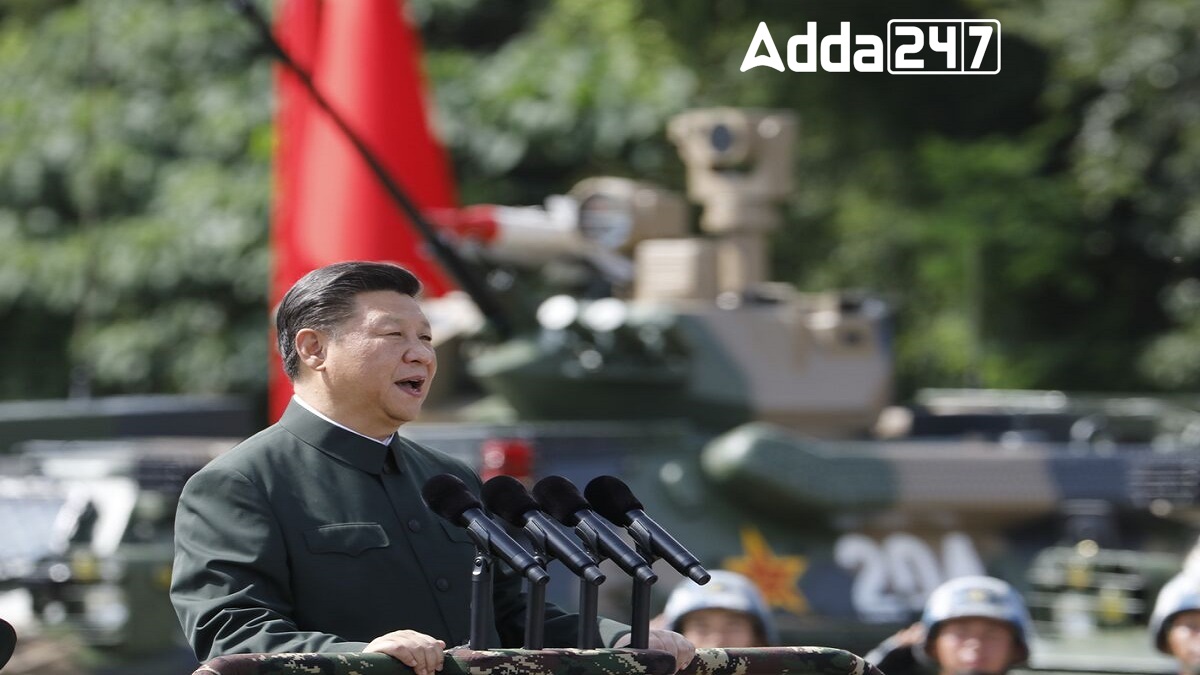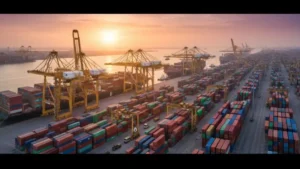Beijing is systematically increasing pressure on Taiwan through a multifaceted strategy that military officials describe as the “Anaconda Strategy,” aimed at compelling Taipei to accept reunification as inevitable. Although the situation around Taiwan has been relatively stable compared to global conflicts like those in Ukraine, this calm may be deceptive. Chinese military activities are intensifying, with a marked increase in air and naval incursions near Taiwan, raising concerns about a potential blockade or cyber warfare aimed at crippling Taiwan’s economy and communications.
Intensifying Military Presence
Taiwanese officials report a significant rise in Chinese military activities, with air incursions across the median line in the Taiwan Strait increasing over five-fold in recent months, from 36 in January to 193 in August. Naval vessels operating around Taiwan have also doubled, from 142 to 282 in the same timeframe. These exercises are becoming more sophisticated, involving joint operations among the People’s Liberation Army (PLA) branches, indicating preparations for a potential blockade or amphibious assault.
Economic and Psychological Warfare
As part of its strategy, China aims to undermine Taiwan’s defenses and morale. A potential cyberattack could disrupt communications and infrastructure, isolating Taiwan from vital supplies like energy and food. The Foundation for Defense of Democracies notes that while Taiwan has made strides in developing green energy, such systems could be vulnerable to enemy attacks during a conflict, exacerbating energy shortages.
Historical Context and Future Risks
Since Taiwan’s Democratic Progressive Party assumed power in 2016, China’s military drills have escalated to pressure the island and assert its military capabilities to global observers. The drills often coincide with significant political events in Taiwan, such as high-profile foreign visits. This ongoing strategy risks straining Taiwan’s naval resources, with more than half of its warships behind on maintenance and heavy deployment required for Chinese drills. Taiwan’s government has started limiting public information about military activities to maintain morale, highlighting the growing anxiety surrounding the potential for a future confrontation.
Key Points of China’s ‘Anaconda Strategy’
The “Anaconda Strategy” refers to China’s multi-faceted approach to exert pressure on Taiwan, likening its actions to an anaconda that slowly constricts its prey.
Military Pressure
- Increased military exercises and incursions by the People’s Liberation Army (PLA) around Taiwan.
- Air incursions across the Taiwan Strait median line rose over five-fold from January to August 2024.
- Naval vessel activity doubled during the same period.
Psychological Warfare
- Aims to intimidate Taiwan through military drills and displays of force.
- Chinese wargames are timed with significant political events in Taiwan to heighten pressure.
Economic Isolation
- Potential cyberattacks aimed at disrupting Taiwan’s communication and infrastructure.
- Strategy to cut off Taiwan from critical supplies, including energy and food.
Historical Context
- The strategy evolved after China’s military actions were thwarted during the 1996 Taiwan Strait Crisis by U.S. naval deployments.
- Increased military activity has coincided with the rise of the pro-independence Democratic Progressive Party in Taiwan since 2016.
Global Implications
The strategy tests the responses of international allies, including the U.S., Japan, and South Korea, to potential conflicts over Taiwan.
Taiwan’s Response
- Taiwan’s government has begun limiting public information about military activities to maintain morale amid rising tensions.
- The Taiwanese Navy is stretched thin, with many warships behind on maintenance due to high operational demands.
Key Points on China’s “Anaconda Strategy”
| Aspect |
Details |
| Why in News |
China’s “Anaconda Strategy” has increased pressure on Taiwan, with air incursions rising five-fold in 2024 and naval operations doubling. |
| Strategy |
Named the “Anaconda Strategy,” it aims to slowly and comprehensively constrict Taiwan using military, economic, and psychological tactics. |
| Military Activities |
– PLA incursions across the Taiwan Strait median line have surged significantly. |
|
– Joint military operations show signs of readiness for a blockade or amphibious assault. |
| Psychological Warfare |
– Military drills are timed with political events in Taiwan to exert pressure. |
|
– Measures to weaken Taiwanese morale, such as restricting details about PLA activities. |
| Economic Threats |
– Cyberattack potential targeting Taiwan’s infrastructure and communication systems. |
|
– Strategies to block critical supplies, like energy and food, to increase economic strain. |
| Historical Context |
– Evolving since the 1996 Taiwan Strait Crisis, with escalations growing post-2016 under Taiwan’s pro-independence leadership. |
| Global Implications |
– Tests international allies’ resolve, including the U.S., Japan, and South Korea, to support Taiwan’s defense. |
| Taiwan’s Challenges |
– Taiwan’s navy is stretched thin, facing maintenance backlogs for warships. |
|
– The government is working to maintain public morale by limiting military information. |





 Operation Hawkeye: US and Jordan Strike ...
Operation Hawkeye: US and Jordan Strike ...
 India and the Netherlands Set Up Joint T...
India and the Netherlands Set Up Joint T...
 Brazil Hands Over BRICS Presidency to In...
Brazil Hands Over BRICS Presidency to In...







